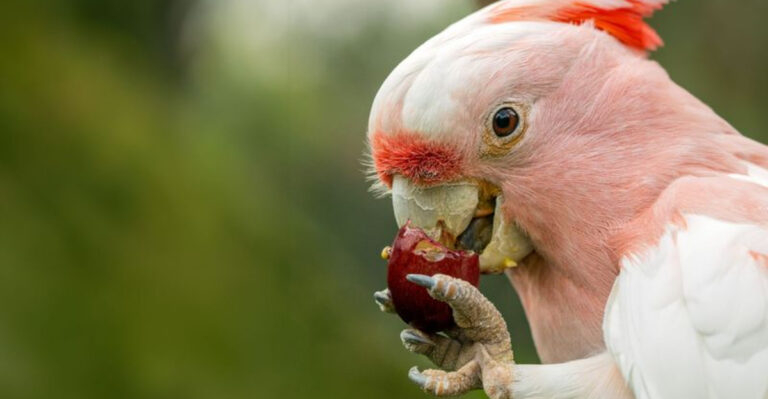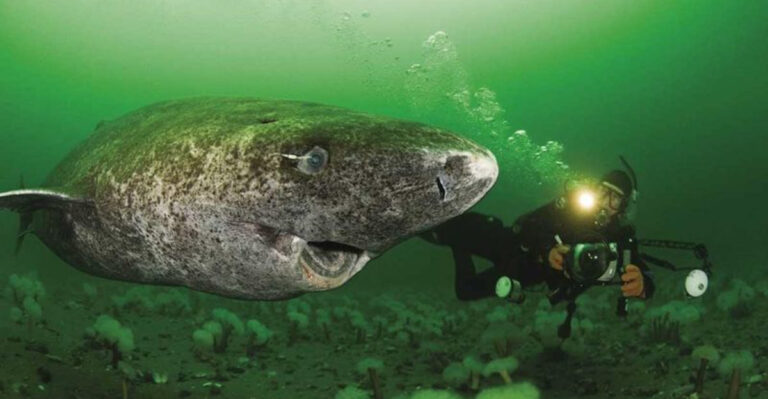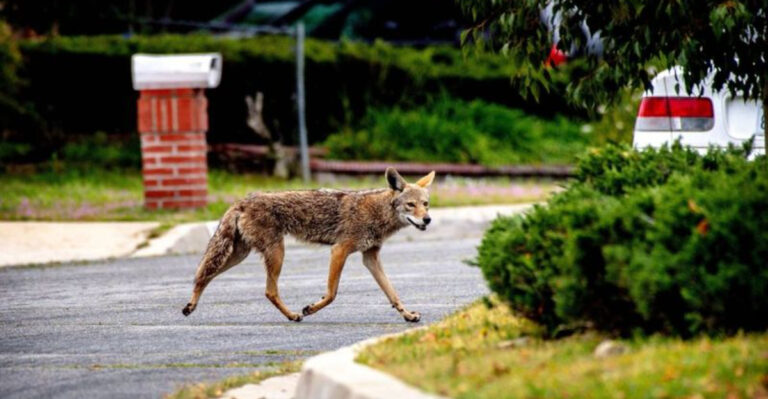North America’s 22 Most Dangerous Venomous Animals
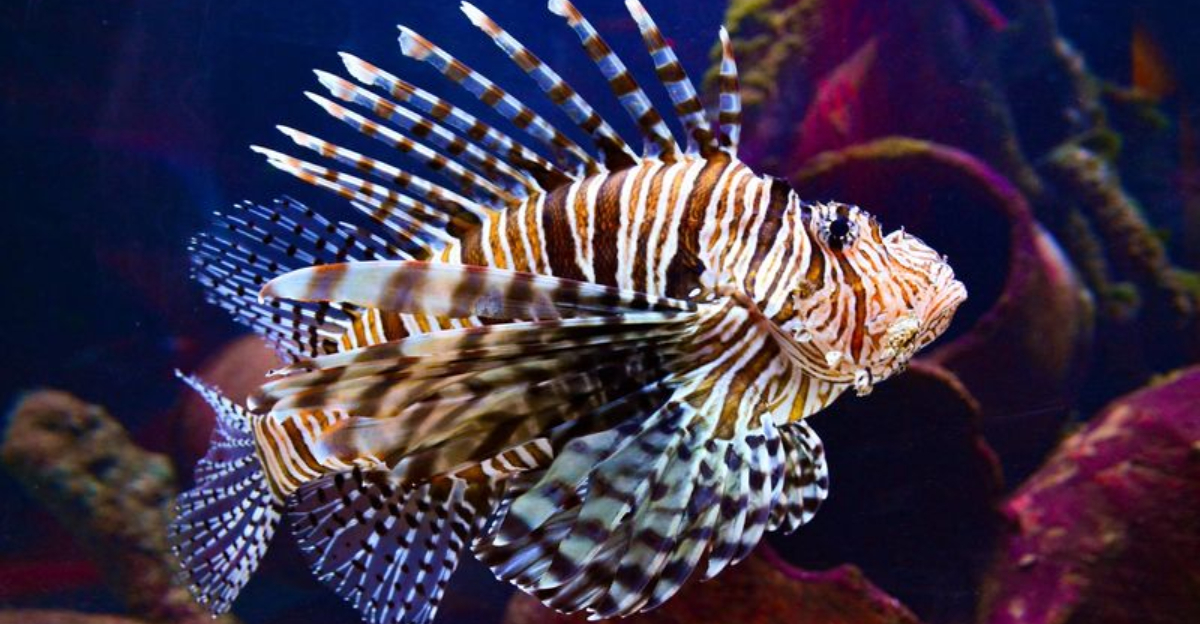
Welcome to the wild (and sometimes wicked) world of North America’s most venomous creatures. These animals may be small or silent, but they pack a serious punch.
So gear up for a tour of nature’s most dangerous locals. It’s going to be wild, weird, and totally worth it!
1. Brown Recluse Spider
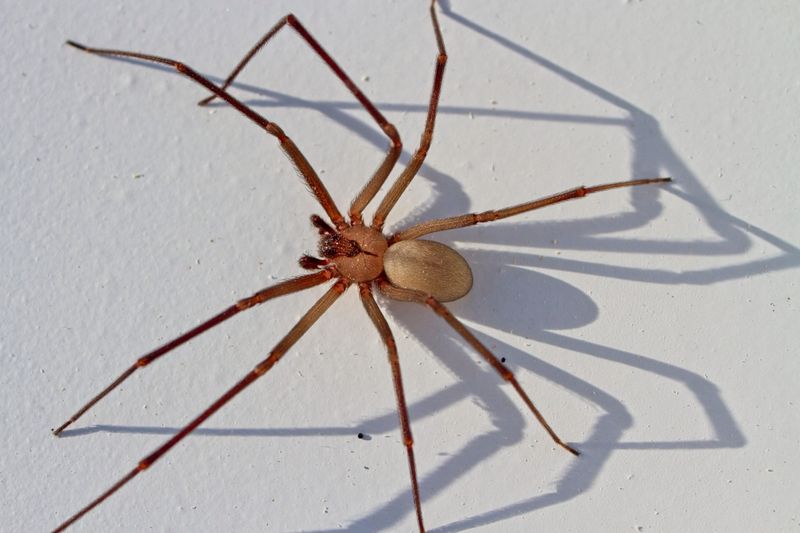
The Brown Recluse Spider may be tiny, but it’s earned a big reputation. Found mostly in the Midwest and South, it’s known for that violin-shaped mark on its back.
It loves dark, quiet hideouts like basements, closets, and forgotten shoes. Most bites happen when it’s accidentally squished or disturbed.
Its venom can cause skin necrosis—yep, that means tissue damage. While scary, serious bites are rare, and the spider usually just wants to be left alone.
2. Gila Monster
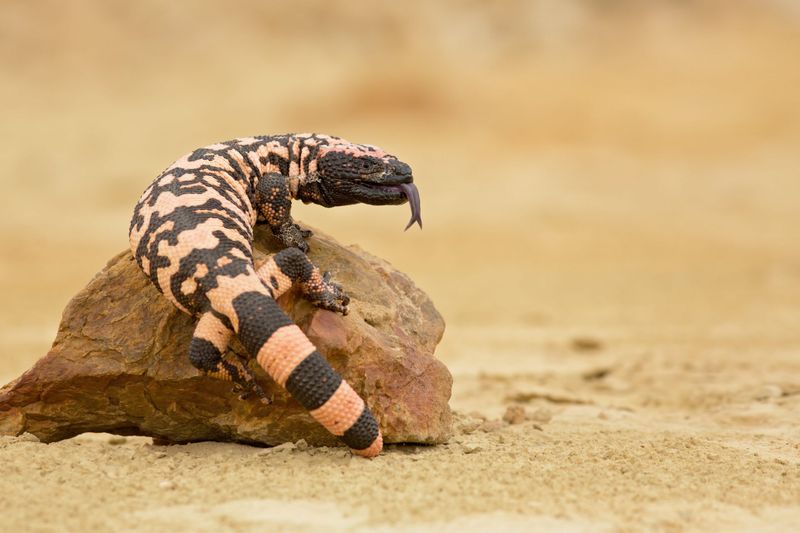
The Gila Monster is a desert native with bold orange-and-black armor and a reputation that definitely turns heads.
It’s one of the rare venomous lizards in the world—and the only one in the U.S.
Its venom travels through grooves in its teeth, and while a bite won’t kill you, it’ll definitely ruin your day.
Thankfully, it’s slow-moving and not the least bit interested in picking fights.
3. Texas Coral Snake
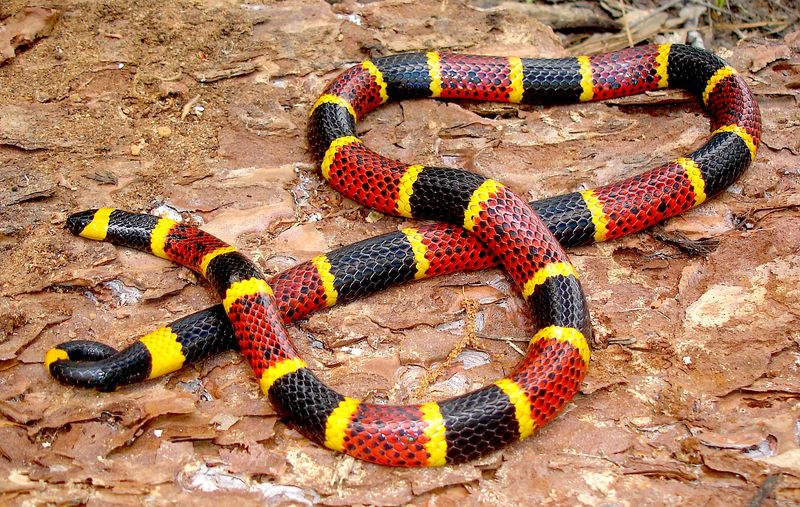
The Texas Coral Snake is a stunner with its bold red, yellow, and black stripes—but don’t let those good looks fool you.
This beauty carries a powerful neurotoxic venom that targets the nervous system.
Luckily, it’s shy and prefers to slither away rather than strike. Bites are rare, but serious, so hands off is the way to go.
It dines on other snakes and small lizards, making it a sneaky little predator in the food chain. That bright pattern? It’s not just fashion—it’s a built-in warning sign.
4. Eastern Diamondback Rattlesnake
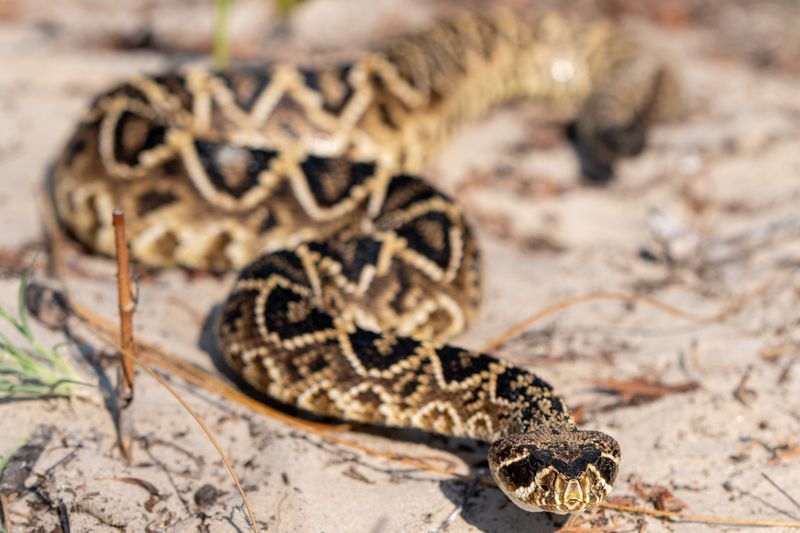
The Eastern Diamondback Rattlesnake is the heavyweight champ of North American snakes.
Found in the Southeast, it sports that bold diamond pattern and can stretch up to eight feet long!
Its venom is no joke—hemotoxic and powerful enough to break down blood cells and tissue fast. One bite, and you’ll know it means business.
This snake doesn’t chase—it waits. Hidden in pine forests and scrublands, it ambushes small mammals and birds with precision.
5. Black Widow Spider
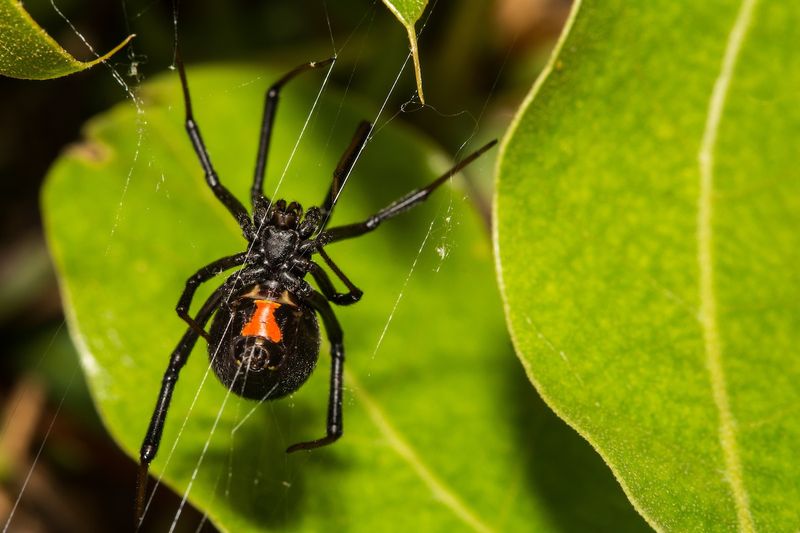
The Black Widow Spider is the ultimate icon of danger—shiny black body, red hourglass, and a bite you won’t forget. It loves dark, quiet spots like sheds, garages, and woodpiles.
Her venom is powerful, causing pain, cramps, and chills, but deaths are super rare. It’s the females that pack the punch, and they only bite if they feel threatened.
Despite the spooky rep, Black Widows aren’t looking for trouble. They just want to be left alone to catch bugs.
6. Western Diamondback Rattlesnake
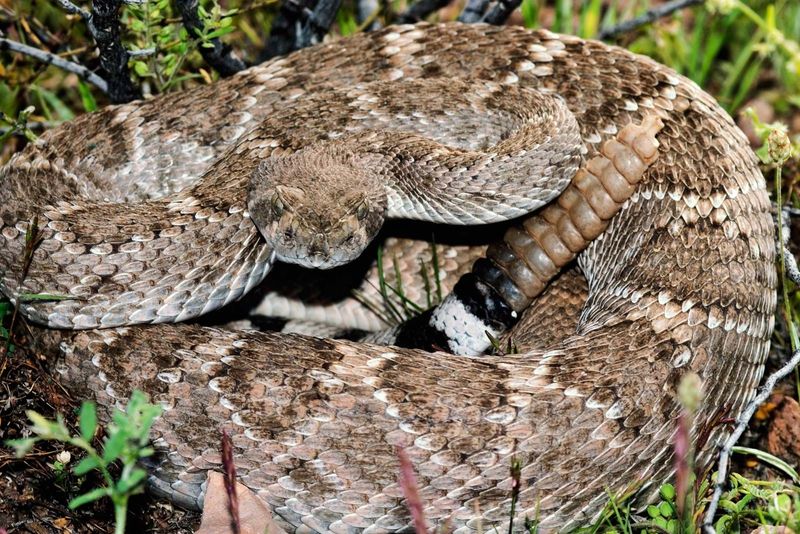
The Western Diamondback Rattlesnake is a desert dweller with serious style—check out that bold diamond pattern and signature rattle!
Found in the Southwest, it’s one of the most recognized snakes in the U.S.
Its bite delivers hemotoxins that can cause intense pain and serious tissue damage. When threatened, it coils up and gives a dramatic shake as a loud “back off!”
Despite the drama, this snake’s no villain. It keeps rodent numbers down and plays a big role in the ecosystem.
7. Scorpionfish

The Scorpionfish is a sneaky reef dweller with top-tier camouflage—blink and you’ll miss it! Hiding among coral, it looks like part of the scenery until it strikes.
But don’t let that spiky exterior fool you—those spines pack venom that stings like fire. Painful, yes, but usually not deadly.
It snacks on small fish and crustaceans, waiting patiently to ambush dinner with lightning-fast precision. Nature gave it both stealth and sass.
8. Arizona Bark Scorpion
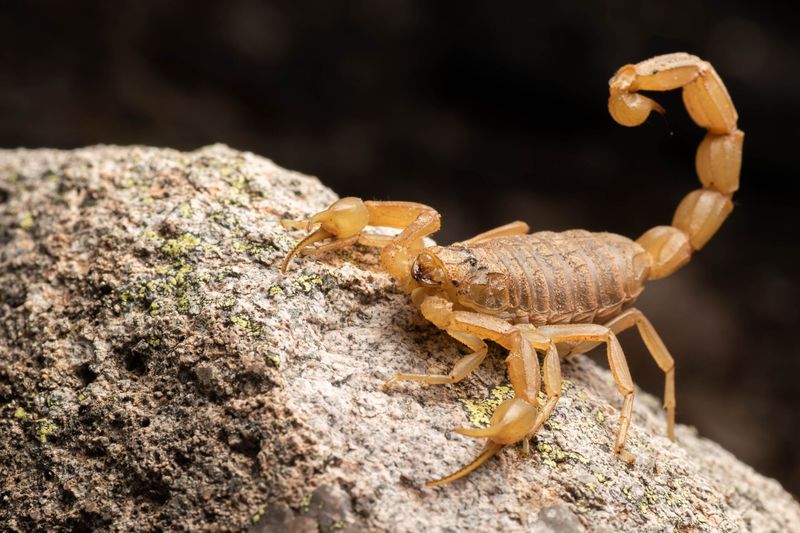
The Arizona Bark Scorpion might be small, but it holds the title of most venomous scorpion in North America.
Its pale body blends perfectly into the desert sands of the Southwest.
One sting packs a serious punch—pain, numbness, even trouble breathing can follow. Kids are especially at risk, but antivenom makes serious outcomes rare.
This sneaky night crawler hides under rocks and sometimes sneaks into homes. At night, it glows under UV light—like a tiny, toxic neon sign.
9. Puss Caterpillar
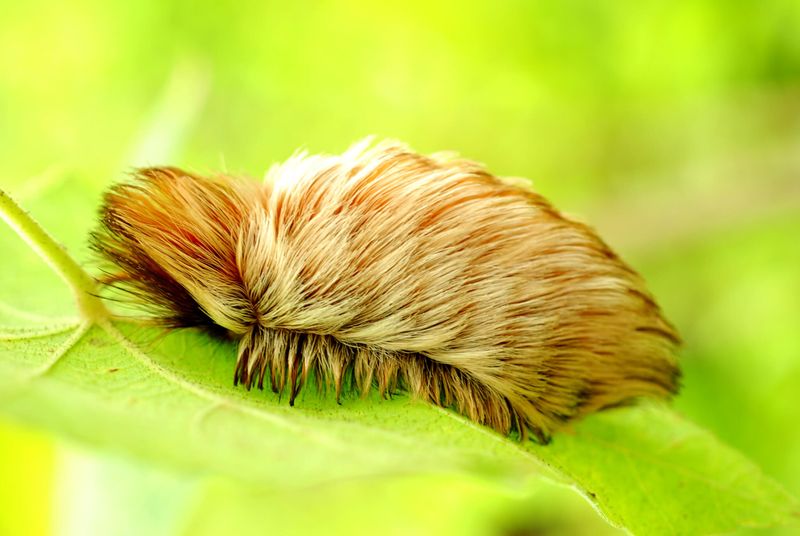
The Puss Caterpillar may look like a fuzzy little pom-pom, but don’t be fooled—it hides venomous spines beneath that soft coat!
Common in the Southeast, it lounges on shade trees and shrubs, waiting to surprise the unsuspecting.
Touching it can feel like grabbing a burning coal—pain, rash, even nausea can follow. Cute? Yes. Cuddly? Absolutely not.
This fluff ball eventually becomes the Southern Flannel Moth, which looks way less threatening. Still, it’s smart to keep your hands off.
10. The Venomous Shrew
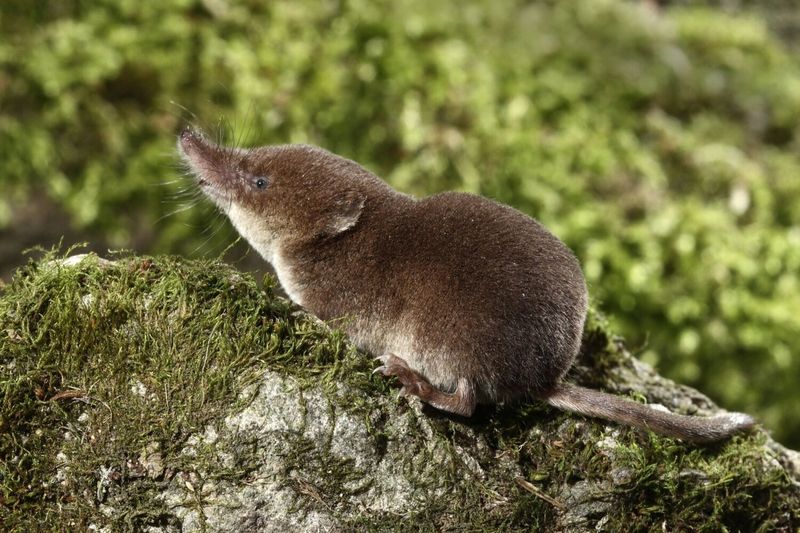
Tucked away in the leaf litter, the venomous shrew might seem harmless—but it’s got a wild secret. With sleek fur and tiny fangs, this little mammal delivers venom like a pro.
Its bite isn’t deadly to humans, but it can cause pain and swelling if you’re unlucky enough to get nipped.
Mostly, though, it uses that venom to paralyze bugs and worms for dinner.
Small but fierce, the shrew is a stealthy predator that rules the insect world in North America’s forests. Not bad for a critter that fits in your palm!
11. Southern Copperhead
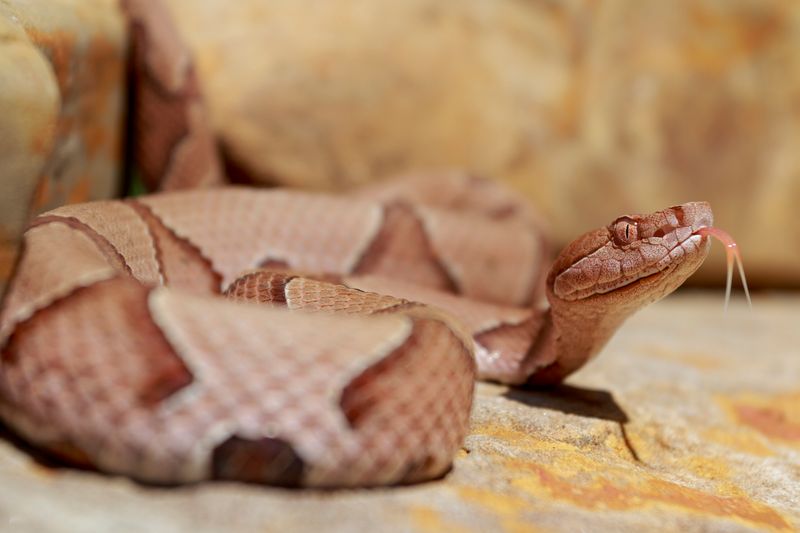
The Southern Copperhead is a master of disguise, blending perfectly into fallen leaves with its coppery-brown pattern.
Found throughout the eastern U.S., it’s often hiding in plain sight.
Its hemotoxic venom causes pain and swelling, but it’s rarely life-threatening. Most bites happen when someone accidentally steps too close.
This snake prefers to stay still and avoid trouble, relying on camouflage instead of confrontation. If pushed, it may release a musky “back off” warning.
12. Cottonmouth (Water Moccasin)
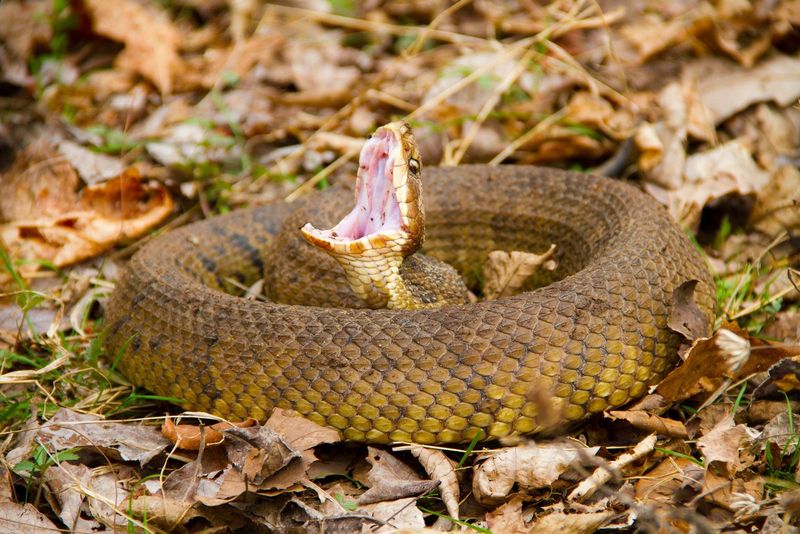
The Cottonmouth, or Water Moccasin, is a bold beauty of the southeastern wetlands. Its gaping white mouth is a dramatic warning sign you won’t forget!
This snake’s venom is hemotoxic, causing pain and tissue damage—but with quick treatment, bites are rarely fatal.
It’s more bark than bite, often holding its ground to scare you off.
You’ll spot it near swamps, streams, and rivers, where it hunts fish, frogs, and the occasional small mammal. It’s a key player in keeping wetland ecosystems balanced.
13. Blue-Ringed Octopus
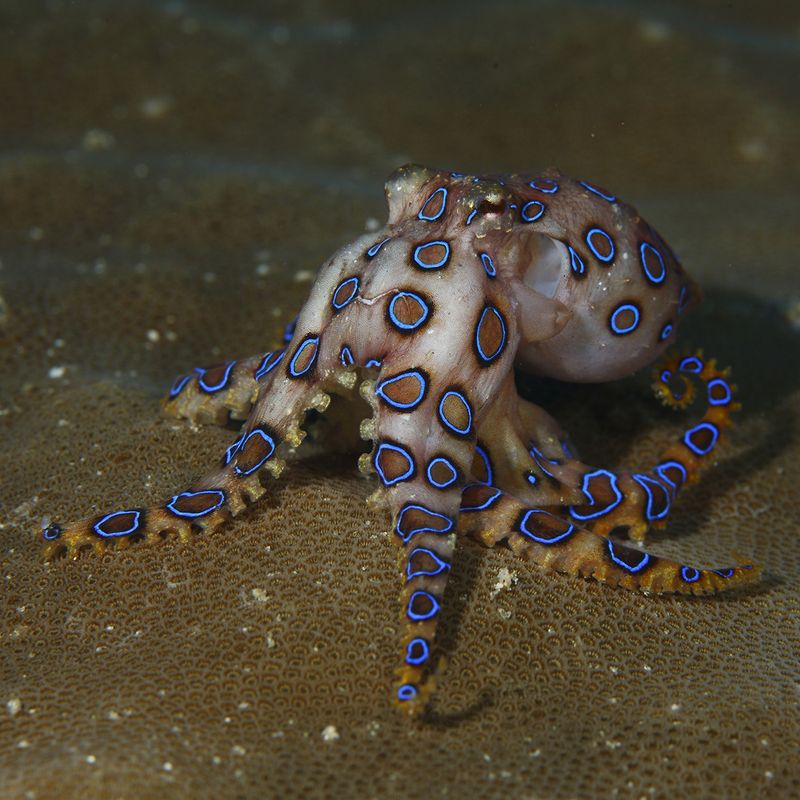
The Blue-Ringed Octopus, though small enough to fit in your palm, holds a venom with the power to paralyze. Its bright blue rings are a warning signal, revealing a deadly weapon beneath its gentle guise.
Found in tide pools and rocky shores, this creature’s beauty masks its lethal capabilities. One bite can lead to paralysis, proving its venom is not to be underestimated.
Admire its beauty at a safe distance. The Blue-Ringed Octopus is a reminder that the most beautiful creatures can be the most dangerous.
14. Western Coral Snake
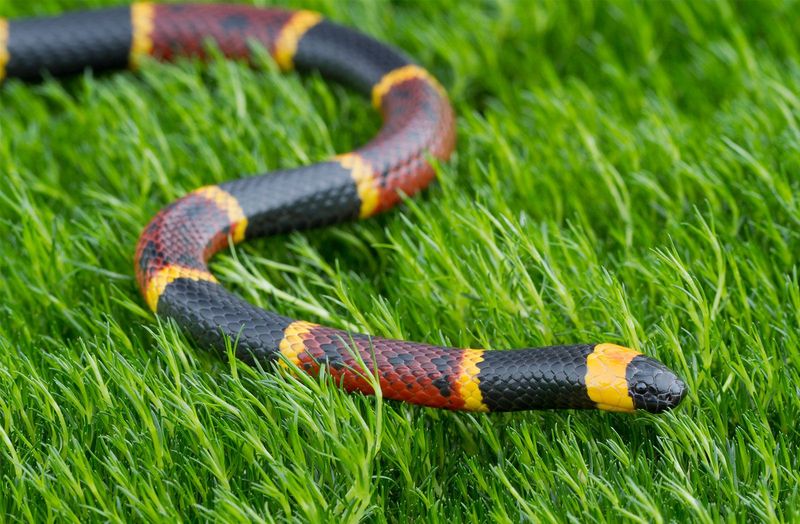
The Western Coral Snake is a hidden gem of the Southwest—bright red, yellow, and black bands make it easy to spot, if you’re lucky enough to see one!
It prefers to stay tucked away under rocks or brush, avoiding the spotlight.
Its venom is a strong neurotoxin, but bites are super rare thanks to its shy, reclusive nature. This snake isn’t looking for trouble—it just wants to hunt small reptiles in peace.
Helping to keep other critters in check, it’s a quiet force in the ecosystem. Predator with style? Absolutely.
15. Red Imported Fire Ant
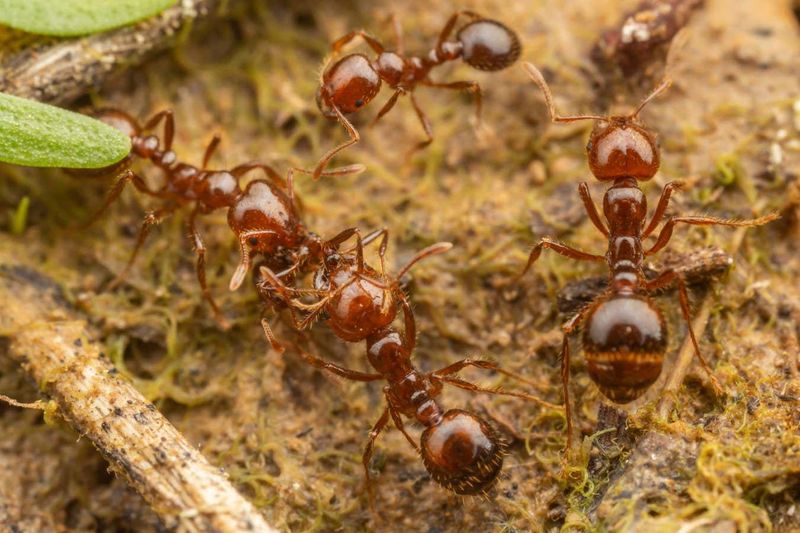
The Red Imported Fire Ant may be tiny, but it’s got a sting that feels like, well—fire. Common in the southern U.S., these ants don’t mess around when defending their turf.
Disturb their mound, and they’ll swarm in seconds, delivering stings that burn and itch like crazy. For some folks, it can even trigger dangerous allergic reactions.
Your best bet? Watch your step and steer clear of their nests. If they move in, it might be time to call in the pros.
16. Timber Rattlesnake
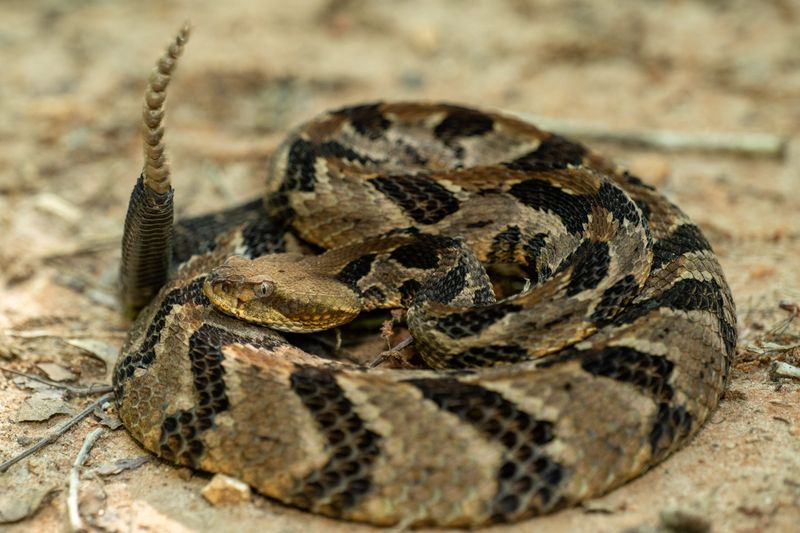
The Timber Rattlesnake is a stealthy forest dweller, blending right into the leaf-covered floor of the eastern U.S.
With its rugged look and quiet presence, it’s a true master of disguise.
Its venom is hemotoxic, causing swelling and serious pain, but it’s not out to pick fights. This snake would much rather stay hidden than strike.
That signature rattle? It’s a polite but firm warning to back off. If you hear it, take the hint and give it space.
17. Mojave Rattlesnake
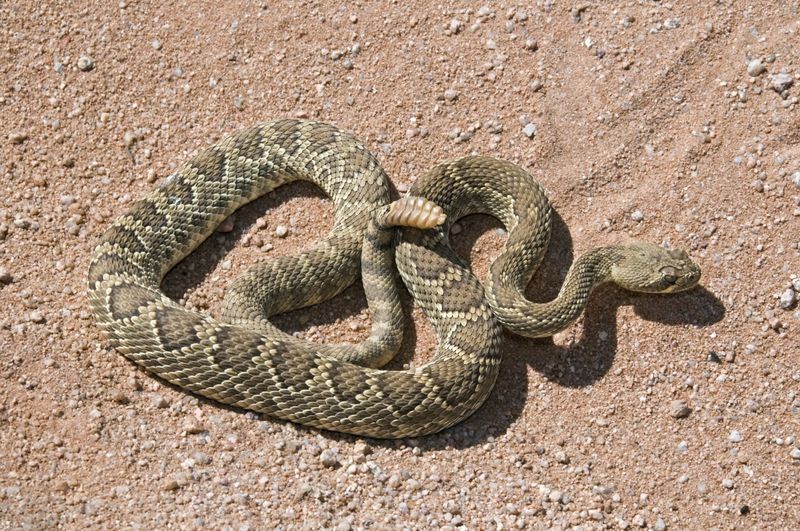
The Mojave Rattlesnake is a desert legend—and not just for its striking looks. Found in the Southwest, it’s known for packing one of the most potent venoms of any rattlesnake.
Its bite delivers both hemotoxins and neurotoxins, hitting blood and nerves alike. Serious stuff—but bites are rare if you give it space.
This snake keeps desert rodent populations in check, playing a big part in the ecosystem. It’s a quiet predator with a powerful punch.
18. Yellowjacket Wasp
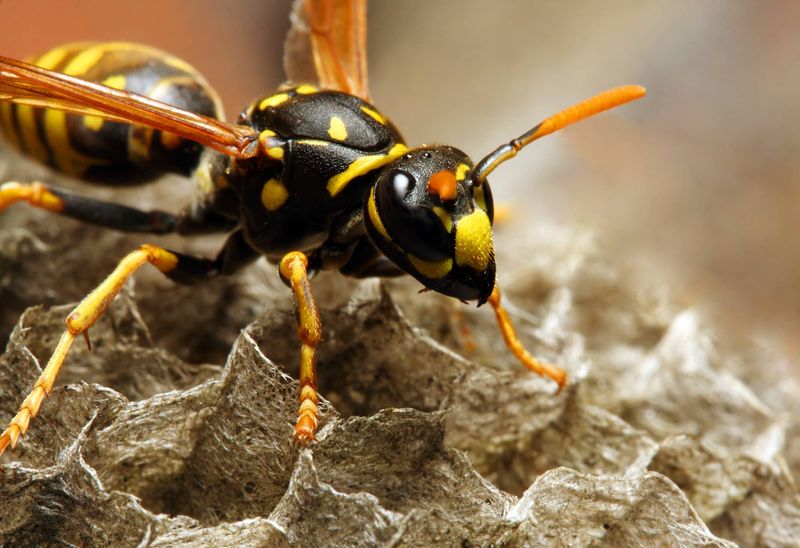
The Yellowjacket Wasp may look flashy with its yellow-and-black stripes, but it’s not just about the style—it’s a warning!
These little buzzers get aggressive fast, especially near their nest.
Unlike bees, they don’t stop at one sting—they keep going, and their venom can be serious for those with allergies.
Late summer barbecues? That’s prime Yellowjacket season.
They love sweet drinks and uncovered snacks, so keep your food sealed and your soda lids tight. Swatting at them only makes things worse.
19. Western Black Widow
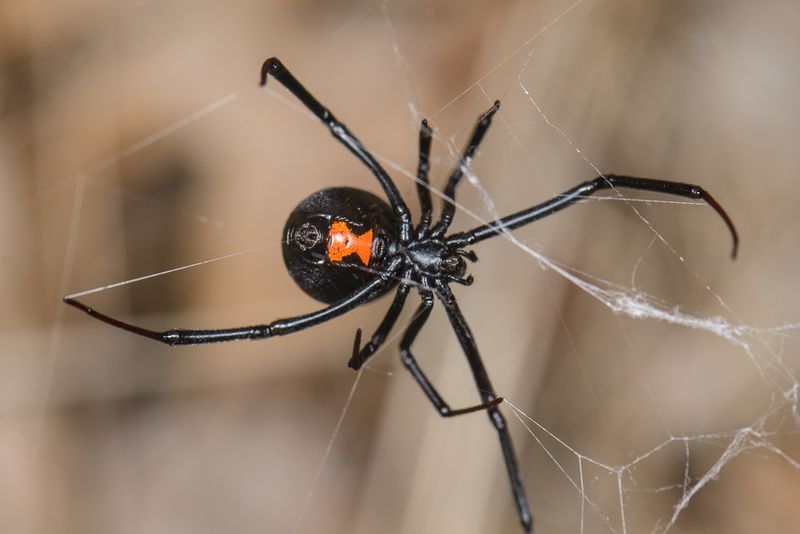
The Western Black Widow is a sleek, shiny spider with a red hourglass that screams “don’t mess with me.”
Found mostly in the West, it’s the sibling of the infamous eastern widow—and just as venomous.
Its bite delivers a neurotoxic punch, causing cramps and pain, but deaths are extremely rare. These ladies aren’t out for blood—they only bite if cornered or startled.
Garages, sheds, and woodpiles are their favorite hideouts, so tidy up and wear gloves when digging around. A little caution goes a long way.
20. Rough-Skinned Newt
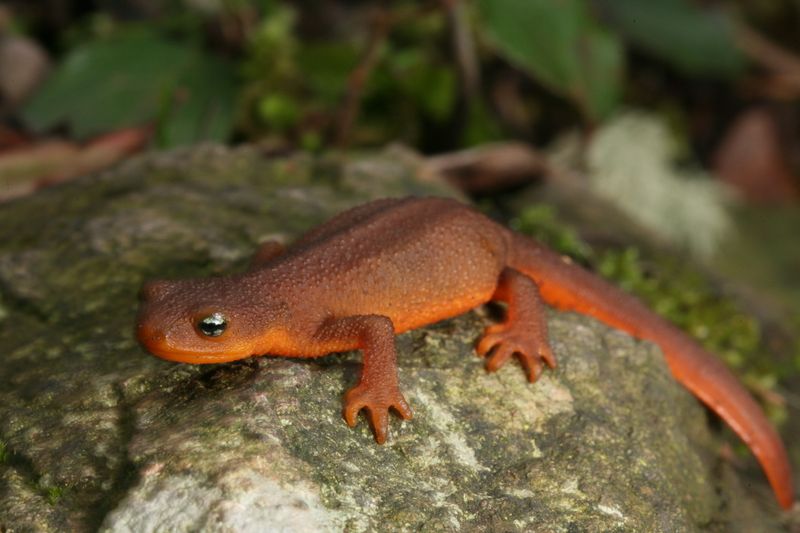
The Rough-Skinned Newt might look cute and squishy, but it’s packing a deadly surprise—tetrodotoxin, one of nature’s most powerful poisons.
Its bright orange belly is basically shouting, “Don’t eat me!”
Found in the Pacific Northwest, it’s no threat unless you handle it carelessly or, yikes, try to ingest it.
Touching is fine—just don’t rub your eyes or put your hands in your mouth afterward.
This little amphibian is a big help in keeping insect populations in check. It’s a silent warrior in the ecosystem.
21. Cane Toad
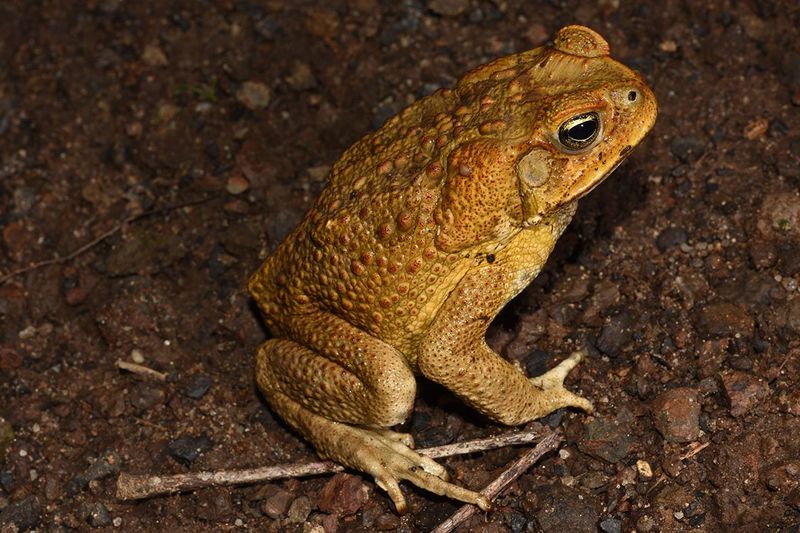
The Cane Toad is no ordinary hopper—it’s a toxic troublemaker with warty skin and glands that ooze a milky, deadly substance.
Just one lick can be fatal for pets and dangerous for wildlife.
Originally from Central and South America, it’s now an invasive force in parts of North America, throwing ecosystems out of balance.
These toads eat just about anything and muscle out native species.
Touching one isn’t a great idea—their toxins can absorb through skin or cause serious issues if ingested. Best to admire from a distance!
22. Lionfish
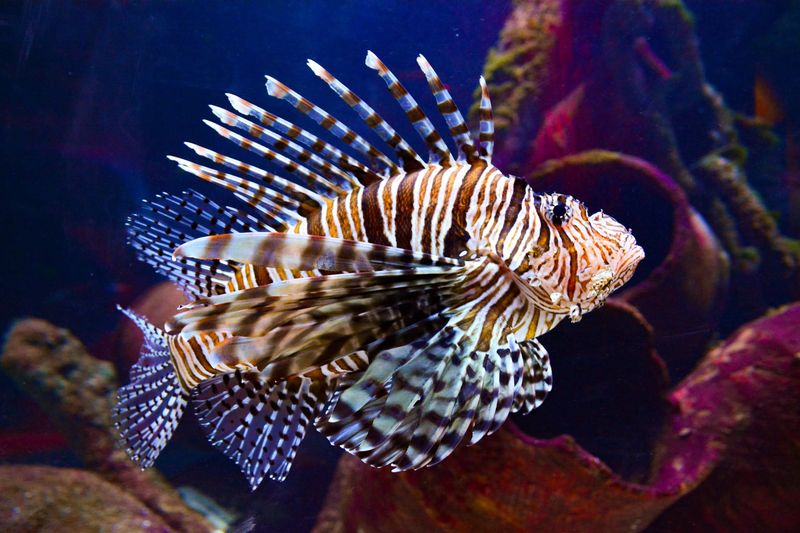
The Lionfish is a stunning, yet dangerous, inhabitant of warm ocean waters.
With its flamboyant red and white stripes and elegant, flowing fins, it is both a visual delight and a reminder of nature’s cunning adaptations.
Beneath its beautiful exterior lie venomous spines capable of delivering a painful sting to an unwary swimmer or predator.
This predatory fish uses its venom to stun prey and deter potential threats, making it a formidable hunter in its aquatic environment.

